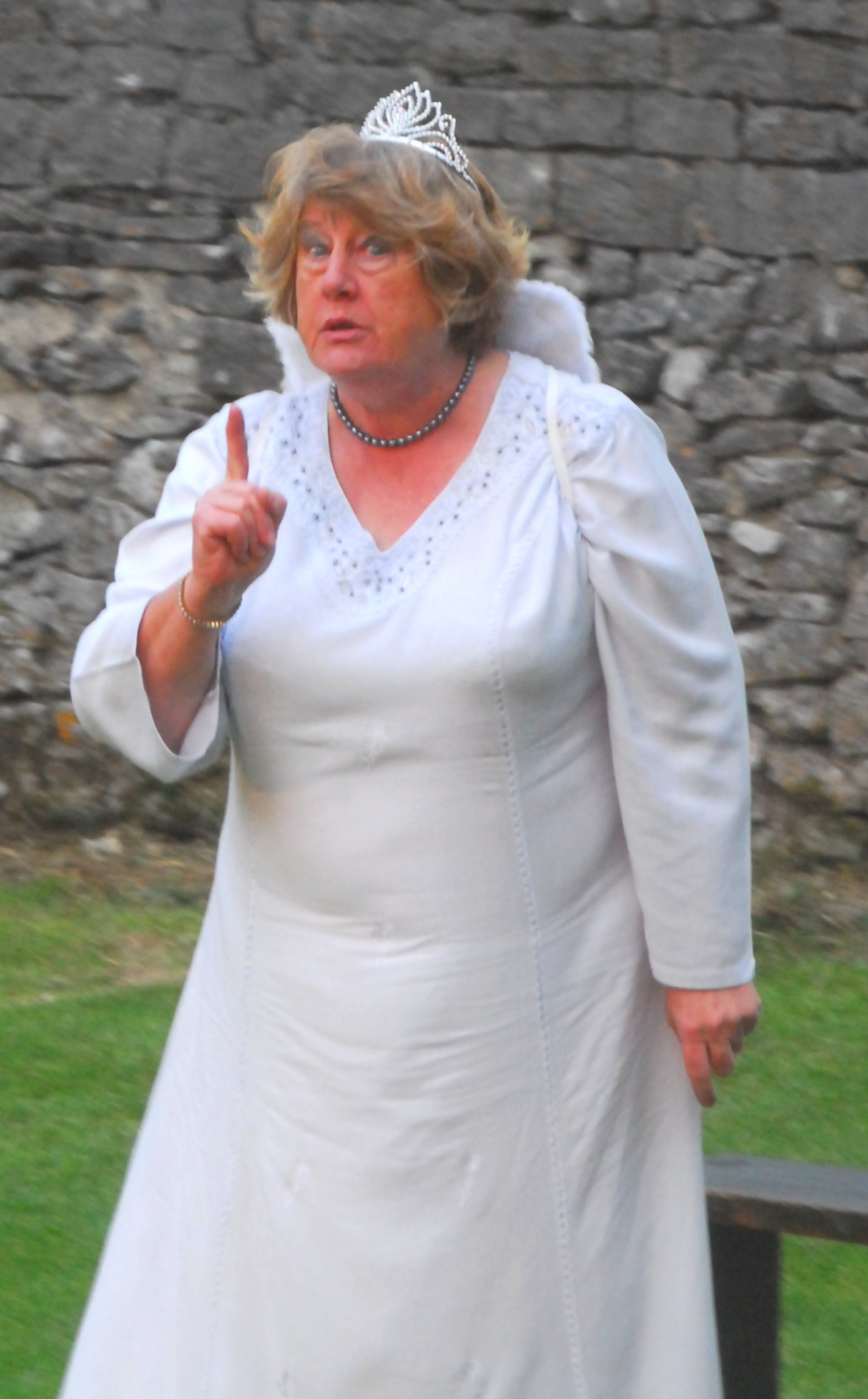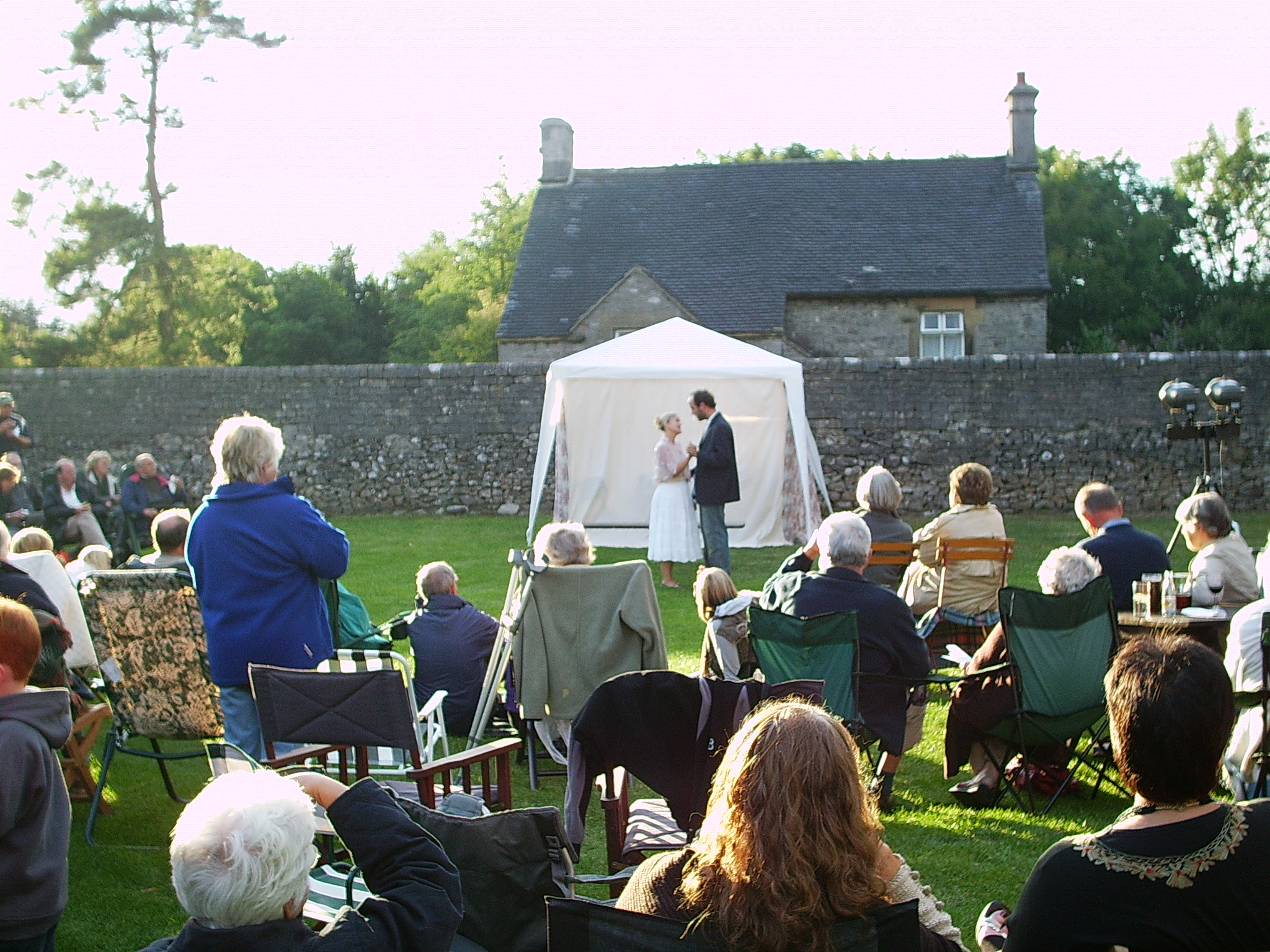The Course of True Love
Annaliese Connolly
Sheffield Hallam University
dsac@shu.ac.uk
Connolly, Annaliese. "Review of The
Course of True Love." Early Modern Literary Studies 12.2 (September,
2006): 19.1-5<URL: http://purl.oclc.org/emls/12-2/revtruel.htm>.


By William Shakespeare and Ben Spiller. Presented by
the 1623 Theatre Company at The George, Alstonefield, England. 11th
August 2006. Directed by Ben Spiller. With Diane Dawson (Venus / Nurse /
Servant / Margaret / Alice / Celia), Rebecca Gadsby (Juliet / Ophelia / Lady
Macbeth / Beatrice / Viola / Perdita / Kate / Katherine / Titania / Portia
/ Jessica / Rosalind), Neal Rhys (Romeo / Hamlet / Laertes / Macbeth / Benedick
/ Orsino / Florizel / Petruchio / Henry V / Bottom / Brutus / Lorenzo / Orlando).
-
Now, more than ever, Stratford may seem the
place to be for Shakespearean performance, with the RSC’s Complete Works
Festival in full swing. It is refreshing, therefore, to find a company
who have decided to take Shakespeare out of the theatre and into communities
in Derbyshire and the Midlands. The 1623 Theatre Company, established in
2004, prides itself on taking Shakespeare to non-traditional theatre spaces,
and the locations used so far are a testimony to this ethos. Performances
have been held, for instance, in a disused quarry, in a cavern in the Peak
District and in the orchestra pit of the Old Hall Hotel in Buxton, as part
of the Buxton Fringe Festival. The company tailors its repertoire to make
the location a feature of the performance, drawing on the atmosphere and
space provided by the setting. The production of Shakespeare in the
Underworld, for example, performed in Poole’s Cavern earlier this year,
was an adaptation of the Company’s Sinful Shaxxxpeare, in which the
goddess Hecate takes the audience on a tour of the cavern whilst exploring
examples of the Seven Deadly Sins in scenes from Shakespeare’s plays.
-
The location for the company’s open-air production
of The Course of True Love was the croft of The George, a sixteenth-century
coaching inn, in the village of Alstonefield in the Dovedale Valley. The
village had recently been named ‘The Best Kept Small Village’ in Staffordshire
and the locals responded to the arrival of Shakespeare in Alstonefield with
a hog roast provided by a local butcher, to create an atmosphere of communal
festivity.
-
The Course of True Love consists of
a selection of scenes of love from the tragedies, comedies, romances, histories
and Roman plays, presided over by the Goddess Venus. There were speeches
from twelve plays in all, beginning first of all with a prologue by Venus,
played by Diane Dawson. The role of Venus was the creation of Artistic
Director Ben Spiller, who saw the part as providing a link between the divine
and mortal worlds. The character provided an important framework for the
production as she introduced each of the scenes with witty plot summaries
delivered in tongue-in-cheek rhyming couplets. The use of humorous verse,
combined with the speeches from the plays, is a strategy which has enabled
the company to take Shakespeare on progress and speak to a much wider audience.
-
Dawson’s Venus offers an interesting take
on the goddess of love, as she is older than the lovers she oversees; she
is a matronly figure, whose knowing looks at the audience and wonderfully
throaty voice suggest a woman with a past: a goddess who understands the
complexities of love and relationships. Dawson’s rendering of Venus reminded
me of those badly behaved goddesses of Virgil’s Aeneid, who squabble
and interfere in human affairs. In many ways, Dawson suggested a combination
of Venus and the Nurse from Marlowe’s Dido, Queen of Carthage,
as she underlined how both deities and mortals can be affected by love.
-
The production then began with the most famous
pair of lovers from Shakespeare, Romeo and Juliet, with speeches from the
balcony scene and from Romeo’s departure in Act III, scene v. These speeches
allowed Rebecca Gadsby and Neal Rhys to showcase their talents, and both
actors made good use of the performance space, with Neal in particular moving
in and around the audience. The ensuing diverse choice of scenes—from the
nunnery scene in Hamlet, to Lady Macbeth’s ‘Unsex me here’ speech
and then to the comedies of Much Ado, Twelfth Night, The
Winter’s Tale and The Taming of the Shrew—ensured that there
was a varied tempo, from moments of intense anguish to physical humour.
The second half included a series of very different wooing scenes from Henry
V, A Midsummer Night’s Dream, The Merchant of Venice
and As You Like It which together offered some startling insights
into the behaviour of men and women in love. One of the highlights of the
evening was the inclusion of the scene from Julius Caesar between
Portia and Brutus; although this was perhaps less familiar than the other
scenes and plays in the production, Rebecca Gadsby delivered Portia’s speech
about her role as a wife with real feeling and it provided a useful balance
between the scenes of lovers and those of husbands and wives. The audience
was largely made up of local families with young and teenaged children.
They were clearly engaged throughout, with the chilly playing conditions
deterring neither the actors nor the audience from enjoying Shakespeare
at The George.

